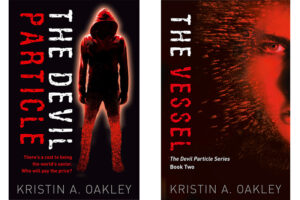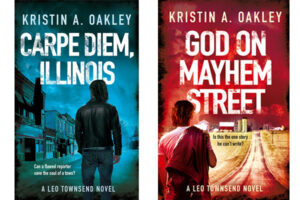Unforgettable characters resonate with readers and lead to more book sales. How can you create an unforgettable protagonist?
First, ask yourself why you are writing about this character. What is it about them that makes you want to spend months or even years writing their story? What’s special about them? As you consider this, create your logline.
Logline
A logline is a one or two-sentence description of your entire story. Many people call it the elevator pitch because it’s the response you give when someone asks you what your book is about as the two of you ride in an elevator. That short ride doesn’t give you much time to explain, hence the quick pitch.
A logline is also one of the hardest things you’ll ever write and something you’ll edit more times than you can count. No matter where you are in your writing process, whether just playing with an idea for a book or on the fifth draft of your novel, writing your logline is a worthwhile exercise.
Loglines should have the following:
- A few words that describe the protagonist. This could be their profession, age, abilities – ideally, what makes them unique. Examples: “a teenage runaway from Kansas,” “a vain Southern bell,” or “The Bastard of Winterfell.” If your protagonist’s name is intriguing, include it.
- The protagonist’s concrete goal that motivates them throughout the story. Examples include marrying the man, landing a dream job, and arriving at a destination.
- Who or what is trying to stop them from achieving this goal – also known as the antagonist.
- Something that makes the story unique. Is it a romance on Mars? A thriller on an Amish farm? A horror story about mutated termites? Be sure to mention it in your logline.
Unique Characters
Unique characters are unforgettable. Once you’ve worked on your logline, consider what makes your protagonist unique. What is your protagonist willing to sacrifice for their goal? What are their wants and needs?
- Heroism – readers love to read about protagonists sacrificing their life/dreams/aspirations to save someone else. If your protagonist is willing to give up their dream career, the love of their life, or even their own life to save someone else, they will be unforgettable.
- Wants are your protagonist’s internal desire; an emotional need that the external goal will fulfill. It makes the character take action. One way to determine the want is to ask how will the character feel when achieving this goal. That feeling is their want.
- The need is something your protagonist can only give themself. Forgiveness is an excellent example of this. K.M. Weiland’s website Creating Stunning Character Arcs gives the following movie examples of characters’ needs: Learn humility and compassion (Thor), Protect the living future over the dead past (Jurassic Park), Be able to share Andy’s love (Toy Story).
Keep in mind that not every book has a protagonist with a need. James Bond, Jack Reacher (in the Lee Child series), and Mark Watney (in The Martian) are good examples of this. It’s their intelligence, resourcefulness, and even humor that make them unique.
Dealing with Conflict
Every story should have both internal and external conflict. Internal conflict is specific to the protagonist and is closely connected to the protagonist’s wants and needs. External conflict affects most or all of the characters in your story. The internal and external conflicts should be closely related. For instance, the desire for revenge pairs internal and external conflicts very well.
How your protagonist deals with conflict can make them unforgettable. When creating conflict for your protagonist, remember:
- Strengths are attributes your protagonist can rely on to get them out of a tough situation and can help them achieve their goal.
- Weaknesses can lead them into danger with no apparent means of escape. They can interfere with achieving the protagonist’s goal. Weaknesses can be external, like a broken leg, or internal, like a lack of confidence.
- The fatal flaw is your character’s internal problem that might lead to their downfall or death. Examples include misplaced trust or loyalty, excessive curiosity, pride, lack of self-control, and selfishness. When thinking of your plot, what is the worst flaw your character could have in that situation?
Choices
Writers often discuss whether books are plot-driven or character-driven. Lately, I’ve been hearing more about how these are the same things. The plot sets up scenarios for the character to maneuver through while the character makes decisions that lead to more plot. The plot and character should be that interconnected.
So, when we talk about creating a character, don’t think in terms of the color of their hair or the clothes they wear; think in terms of what they would do in this situation.
Dilemma
“A dilemma is a problem that cannot be solved without creating another problem. Problems are solved. Dilemmas are resolved through a shift in perception.” – The 90-day novel by Alan Watt.
Unforgettable characters make unforgettable choices when faced with dilemmas. For example, in Suzanne Collins’s novel The Hunger Games, Katniss has to kill Peta or let him kill her to end the games. She comes up with a third solution — mutual suicide. In L. Frank Baum’s The Wonderful Wizard of Oz, Dorothy’s dilemma is to leave with the wizard without Toto or go after Toto and never get home.
Perception shift: In resolving their dilemma, how does your protagonist shift their perception? Do they realize that what they wanted wasn’t what they needed? Katniss has a perception shift which results in her third solution.
Choices Define the Character
To make your character truly unforgettable, have them make choices that define them.
- Your protagonist might make extreme choices. Most protagonists change by the end of the story, whether they’ve learned something, viewed themselves or the world differently, or realized that what they thought they desired wasn’t what they needed. In the television series Breaking Bad, Walter White is an excellent example of a protagonist who makes extreme choices.
- Your protagonist might be a rebel who made a choice to fight the system. Randle Patrick McMurphy in One Flew Over the Coo Coo’s Nest, Holden Caulfield in Catcher in the Rye, and Katniss Everdeen in The Hunger Games are all rebels.
- Or your character might not fit a stereotype and doesn’t react to the situation in a stereotypical way. For example, Nurse Ratchet in One Flew Over the Coo Coo’s Nest is a nurse who destroys her patients, and Hannibal Lecter in Silence of the Lambs is a brilliant psychiatrist who is also a cannibal.
A Worthy Antagonist
You want to create an antagonist with their own goals that are in direct opposition to your protagonist’s goals. To create a powerful antagonist, write a logline from their point of view. If they were the protagonist of your book, what would be their goal, wants, needs, strengths, weaknesses, and fatal flaw? How is their goal in direct opposition to your protagonist’s goal?
There you have it, a few tips to help you create truly unforgettable characters.
Please note: This article was originally published on the November 8, 2022 Chicago Writers Association’s blog.



